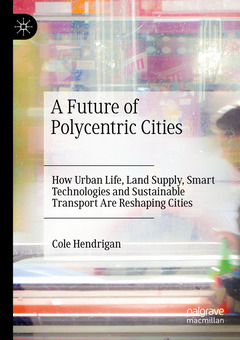Description
A Future of Polycentric Cities, 1st ed. 2020
How Urban Life, Land Supply, Smart Technologies and Sustainable Transport Are Reshaping Cities
Author: Hendrigan Cole
Language: English
Approximative price 84.39 €
In Print (Delivery period: 15 days).
Add to cartPublication date: 10-2020
377 p. · 14.8x21 cm · Paperback
Approximative price 84.39 €
In Print (Delivery period: 15 days).
Add to cartPublication date: 10-2019
· 14.8x21 cm · Hardback
Description
/li>Contents
/li>Biography
/li>Comment
/li>
Provides unique knowledge and insights on how to best make the transition towards more sustainable and livable cities
Offers a practical method on how to better integrate transport and urban development to this end, following the paradigm of ‘Transit Oriented Development’
Points to key criteria and design ideals, and provides a useful method clearly built to be applied in concrete situations
Will broadly appeal to students and researchers in in planning and urban design, as well as professional engineers, planners, architects and landscape architects. Also decision makers at the municipal level




